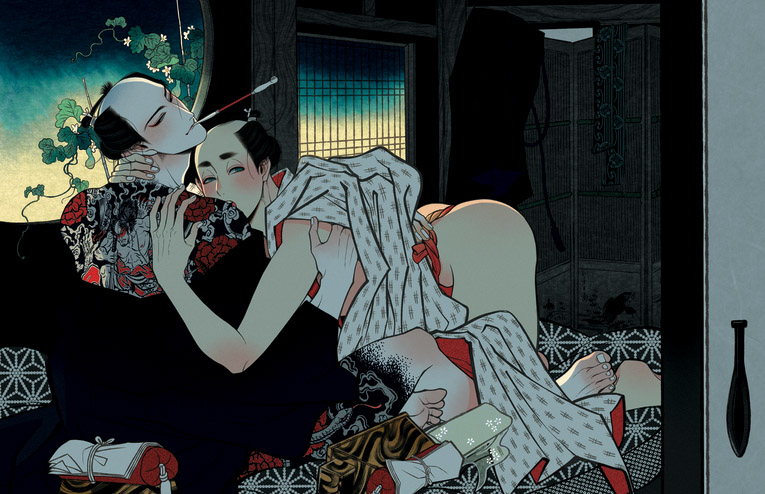22nd Manga Division Excellence Award
MOMO&MANJI
SAKURA Sawa [Japan]
Outline
For the author who creates stories that take place in the Edo period, including Kabuki Isa, which is based on a real kabuki actor and history of theater, this is the first attempt at “boys’ love” (BL). It is a love story between two men in the late Bunsei era (1818-1830). Momoki is a sweetly cheerful former prostitute now working as a servant at a writing school, and Manji is a handsome flute player who performs at festivals and show tents. Since meeting one rainy day, they have become sworn brothers, and now live together in an old row house in Asakusa. Throughout the story, their intimate relationship is depicted using sensual, soft yet sharp brush-like lines, interwoven with adorably comical expressions. The lifestyle of the couple is a faithful depiction of what it really was like in the Edo period, and their sexual expressions incorporate many elements of the shunga (erotic art) culture of the time. A unique BL story about the romantic relationship of a male couple, portrayed with exceptional artistry and detailed historical documentation, filled with elements of the Edo period.
Reason for Award
BL, sodomy, fujoshi (female fans of manga and animated films about romantic male relationships). It is time that we reorient our views on such terms and on existing scornful, discriminatory stereotypes. This is the greatest reason for endorsing this work. Male homosexuality has existed since antiquity. I cannot discuss how it was in Japan during the Heian, Kamakura, or Warring States periods due to limited space here. However, in the Edo period—the time period of this story, there were tea houses offering male prostitutes in the the Yoshiwara red-light district. Moreover, in Tokaidochu hizakurige, the most popular picaresque novel at the time, the main characters had some homosexual relations, and people of those days did not find this particularly strange as they read the book. The author who, through Kabuki Isa, gave us a rich depiction of the appeal of Edo Kabuki, once again, through this work, cheerfully teaches narrow-minded contemporary readers that this sort of amorous tryst did exist. This is valuable reading, and we, too, should read it as nothing out of the ordinary. (MINAMOTO Taro)



